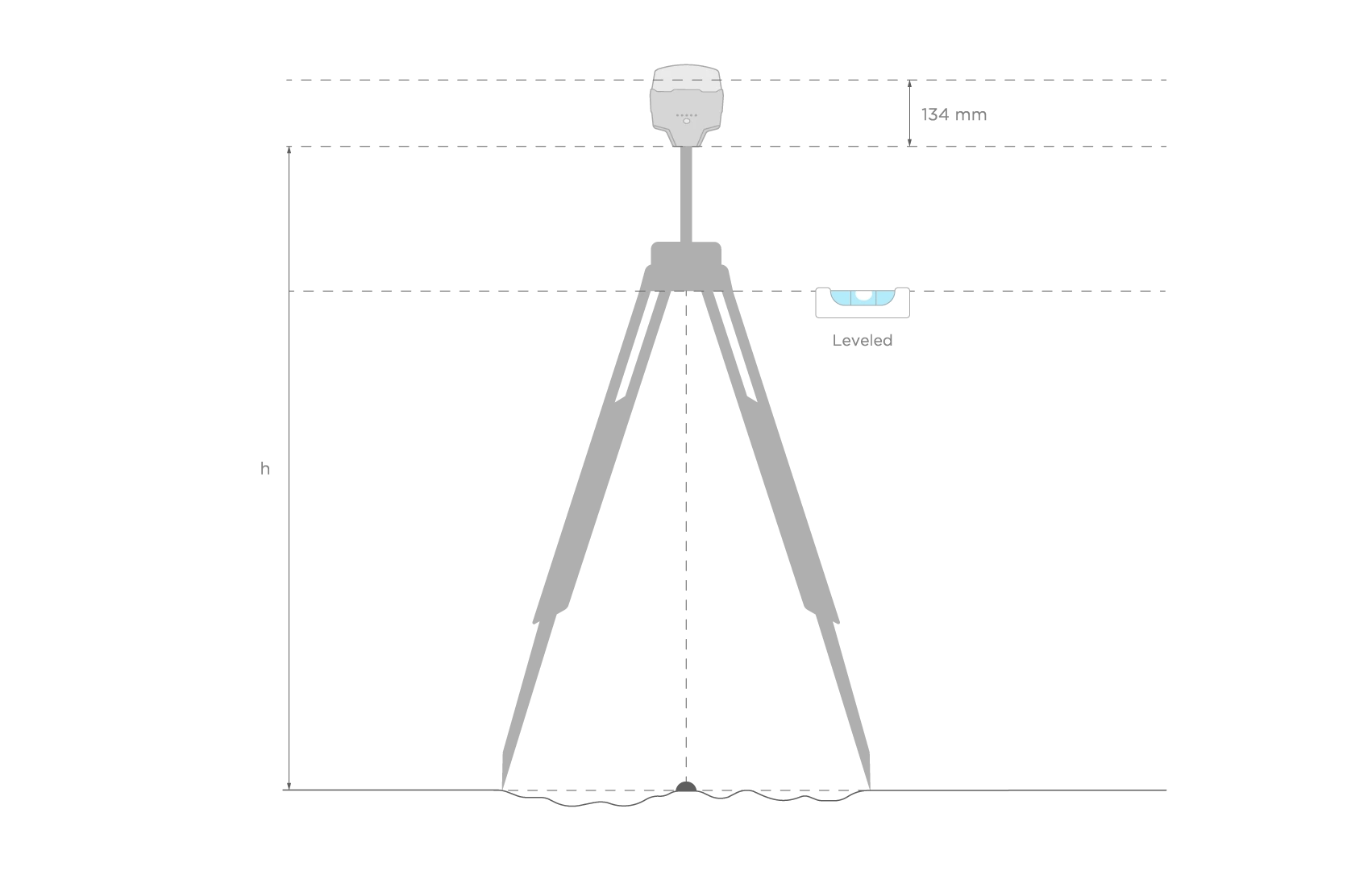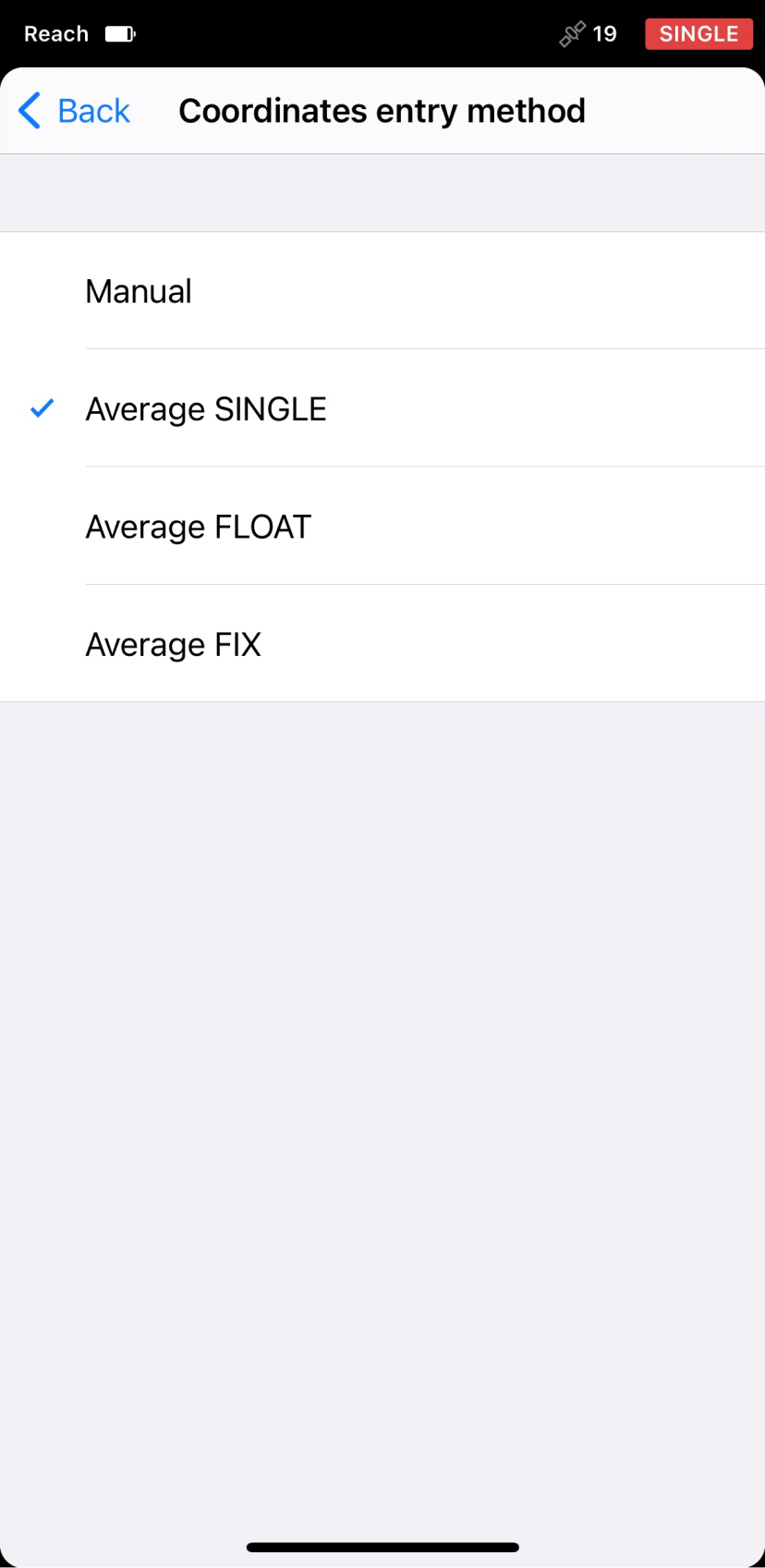Averaging base position in SINGLE
This guide explains how to use the Average SINGLE entry method in the Emlid Flow app to set up base position.
Overview
When you don’t know your base’s position, you can average it in SINGLE using the Average SINGLE coordinates entry method in Emlid Flow. Averaging is done in standalone mode without using any corrections and the position of the base is determined with the accuracy of several meters. In this case, the rover measurements will be centimeter-precise only relative to the base but their actual (absolute) accuracy in the selected coordinate system will be at meter level.
To learn more about the accuracy for RTK and PPK measurements, read our Simple Intro to Accuracy and Precision article.
Workflow
Placing base in field
To place your base station in the field, follow the recommendations below.
Clear sky view without any obstacles
Reach base needs to have a clear sky view 30 degrees above the horizon. There should be no obstacles that could block the view like buildings, trees, cars, humans, laptops, etc.
Take a look at 2 pictures below. The left picture demonstrates desirable conditions for Reach location. The right one is an example of poor surrounding conditions such as the reduced view of the sky, possible obstructions or vegetation nearby.

Examples of recommended environments for Reach placement:
- field
- top of the hill
- rooftop
Examples of poor environments for Reach placement:
- indoors
- urban area
- forestry area
No electronics nearby
Electronic devices may produce RF noise that could affect the reception of the GNSS signal. Keep all electronics as far as possible from Reach.
Measuring antenna height offset
When placing your Reach in the field, make sure your Reach device is placed precisely above the marked point on the tripod and leveled. When you are setting up base coordinates manually, you need to measure the antenna height offset. Follow the steps below:
-
Measure the distance from the mark to the bottom of your Reach (h in Figure 1).
-
Specify the measured distance in Emlid Flow. It will automatically calculate the antenna height.
tipFor Reach RS2/RS2+, the antenna height is the distance from the mark on the ground to the center point on the Reach’s bottom (h in Figure 1), antenna reference point (ARP), plus the height of the receiver to the antenna phase center (APC), antenna height offset. Emlid Flow automatically adds the antenna height offset, which is 134 mm.
 Figure 2. Antenna height
Figure 2. Antenna height
When you placed Reach over the mark and measured the antenna height, you are ready to set up the base position in the Emlid Flow app.
Setting up base’s coordinates in Emlid Flow
Let’s see how to set up the base's position using the Average SINGLE coordinates entry method in the Emlid Flow app:
- Open Emlid Flow and connect to your Reach.

-
Go to Base settings and tap Configure.

-
Tap Coordinates entry method and choose Average SINGLE from the menu.

-
Tap Antenna height to set the antenna height and save it.

-
Set averaging time, tap Save.
Now, when your base coordinates are averaged, you can continue creating up a project on your rover.
You can save these coordinates and use them later within the same project. Without knowing them, you won't be able to reproduce this project.